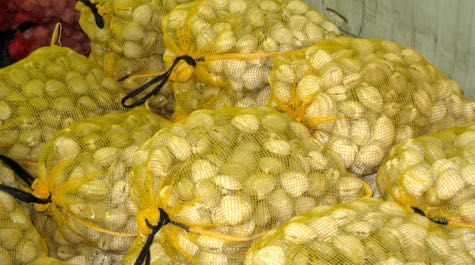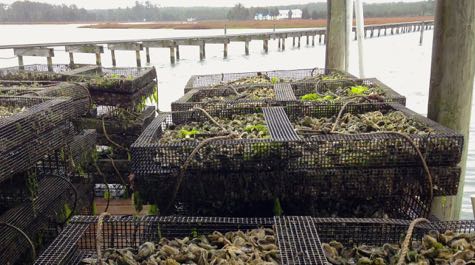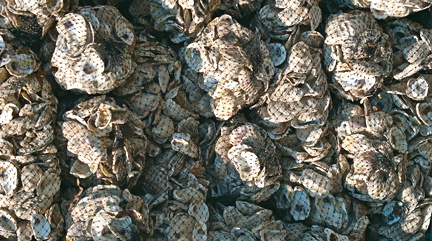Virginia continues to lead in clam and oyster aquaculture
VIMS survey shows $56.6M in farm-gate value in 2016
Virginia shellfish farmers sold $56.6 million in clams and oysters in 2016, with hard clam sales of $38.1 million and $18.5 million in oyster sales. Hard-clam production once again leads the nation and oyster production is tops among East Coast states.
The values are according to the 11th annual Virginia Shellfish Aquaculture Situation and Outlook Report, a survey of shellfish farmers in the state conducted by the Marine Advisory Services program at the Virginia Institute of Marine Science.
The survey and report provide an annual assessment of trends and projections for Virginia’s shellfish aquaculture industry. The latest report is based on an industry survey completed during the first quarter of 2017.
Report author Karen Hudson says, “The story this year is that everything looks good. The markets remain strong and prices are up. There is no sign of market saturation with Virginia products.”
Virginia growers reported an average price of $0.41 per oyster in 2016; the same as the previous year and significantly above the 10-year average of $0.33 per oyster. Oyster hatcheries also reported a sales increase, for both single seed (up 22%) and eyed larvae (up 12%). The average price of eyed larvae has increased for the past 4 years, and in 2016 increased 4% to $326 per million.
“VIMS and our partners have put a lot of effort into supporting the heart of this industry—the hatcheries,” says Hudson. “They produce the product, so we support them by refining tools to better monitor and evaluate water quality to ensure healthy shellfish.” Partners include Virginia Sea Grant, Virginia Tech, and the Virginia Marine Resources Commission.
Virginia growers did report a 22% decrease from the previous year in single oysters planted—from 135.6 million to 106.3 million—but predict an 11% increase in oysters planted for 2017, to 118 million.
Hudson downplays this year’s dip in oyster plantings, saying, “We’re more interested in long-term trends. We would only be concerned if we saw that decline continue over the next 5 years—and nothing in this report suggests that we are on anything other than a good track.”
The number of oysters sold increased by 13% in 2016 compared to the previous year—from 35 million to 40.2 million. Although this is 14% less than predicted in the previous survey—in which Virginia growers forecast a 32% increase to nearly 47 million market oysters—Hudson again sees little significance in the discrepancy. Oyster growers remain optimistic, she says, with survey respondents predicting a 21% increase for 2017 sales, which would translate to nearly 49 million market oysters sold.
Clams
The number of hard clams sold in Virginia in 2016 also increased—to 195.4 million from the previous year’s 185 million. Virginia’s clam growers reported a 10% decrease in seed plantings during 2016 to a total of 476 million clams, but predict an increase of 10% for 2017, which would translate to 523 million individual clams planted. Virginia remains the nationwide leader in growing hard clams.
The 2016 results are drawn from 63 completed surveys returned to VIMS. Respondents include 15 clam growers, 58 intensive oyster growers, 7 extensive oyster growers, 6 shellfish hatcheries, and 10 growers who cultured both molluscs.
Oyster culture has two main production methods, which generally provide product to separate markets. In intensive culture, growers plant single oysters in cages, racks, or floats, then carefully tend them for harvest primarily in the half-shell market. In extensive culture, growers allow hatchery-raised oyster larvae to settle on oyster shells in large tanks on land. They plant the resulting “spat-on-shell” directly on bottom almost immediately, and then allow them to grow freely into clumps of oysters that are harvested for sale as shucked meat.
Clam culture has one standard production method, in which clams are planted in plots and covered with mesh net for predator protection. From planting to harvest is a two-year process; longer than in oyster aquaculture.



